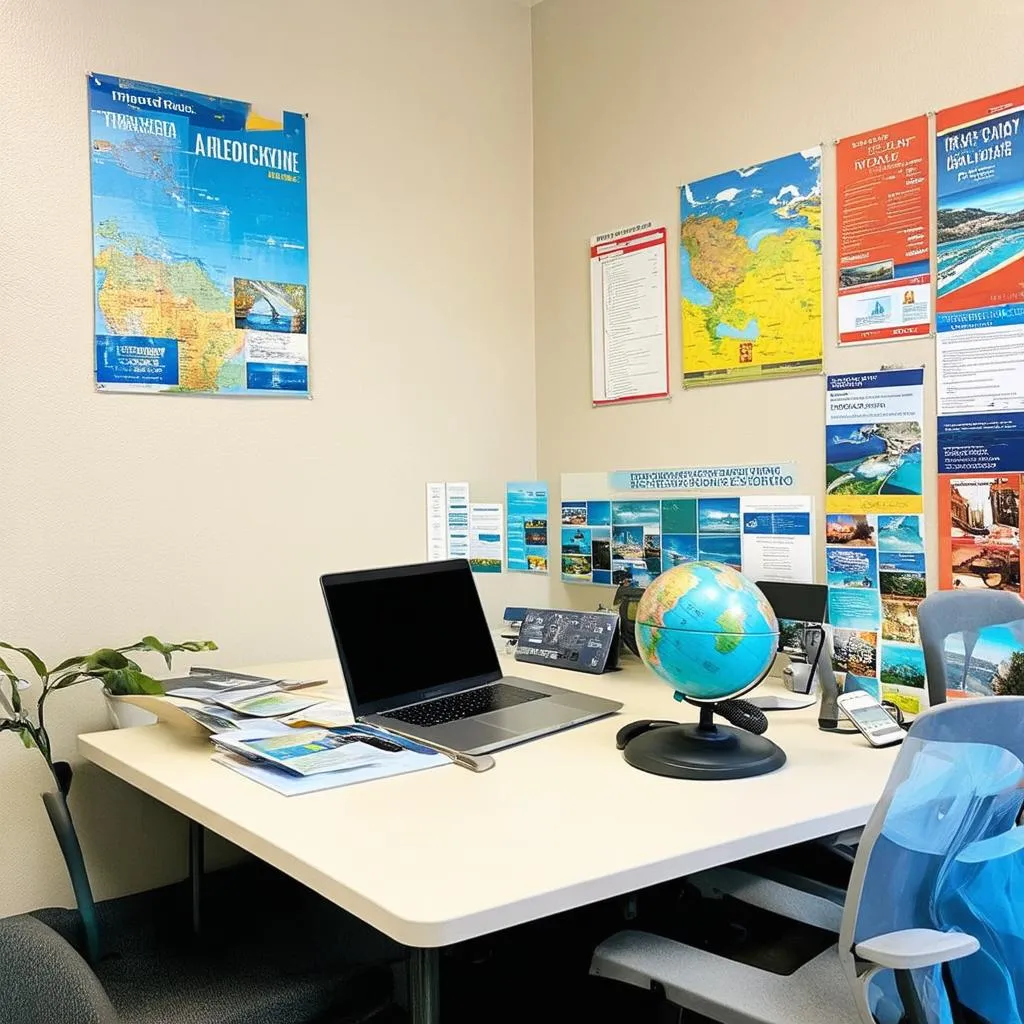Have you ever dreamt of sharing your love for travel with others, building a business around your passion, and exploring new destinations while earning a living? Well, a tour business plan can be your compass in navigating this exciting journey. It’s like a map outlining your vision, goals, and strategies for success in the vibrant world of travel.
What is a Tour Business Plan?
A tour business plan is a comprehensive document that outlines your vision, strategies, and financial projections for your tour business. It acts as a guide to help you secure funding, manage operations, and ultimately, achieve your travel dreams.
Why Create a Tour Business Plan?
Imagine setting sail on a grand adventure without a map, compass, or even a clear destination in mind. That’s how starting a tour business without a plan feels. A well-structured plan provides you with:
- Clarity: Define your niche, target audience, and unique selling proposition.
- Direction: Set clear goals and objectives for your business.
- Funding: Secure loans or investments from potential investors.
- Operations: Outline your marketing, sales, and operational strategies.
- Financial projections: Estimate your revenue, expenses, and profitability.
- Growth: Track your progress and adjust your strategies for future success.
A Tour Business Plan – The Heart of Your Travel Venture
Let’s break down the crucial components of a tour business plan to guide you on your entrepreneurial journey.
1. Executive Summary:
This is the heart of your plan, capturing the essence of your business in a concise and compelling manner. Think of it as the elevator pitch for your tour business.
- Summarize your business idea: What type of tours will you offer?
- Target market: Who are your ideal customers?
- Unique selling proposition: What sets your business apart from the competition?
- Financial projections: Briefly outline your projected revenue, expenses, and profitability.
2. Company Description:
This section provides a deeper dive into your tour business.
- Mission and Vision: What are your core values and long-term goals?
- Services Offered: Outline the specific tours you’ll provide, including their itineraries, duration, and pricing.
- Target Market: Describe your ideal customers in detail, including their demographics, interests, and travel preferences.
- Competitive Advantage: Highlight what makes your business unique and attractive to customers. This could be your expertise in a specific region, your focus on sustainable travel, or your personalized service.
3. Marketing Plan:
This is where you outline your strategies to reach your target market.
- Market Research: Analyze your target market, competitors, and industry trends.
- Marketing Channels: Identify and describe your chosen channels (online, offline, social media, etc.)
- Pricing Strategy: Determine your pricing model, considering your costs, competitors, and target market.
- Sales and Promotion: Develop creative marketing strategies to attract customers, including discounts, partnerships, and promotional campaigns.
4. Operations Plan:
This section focuses on the practical aspects of running your tour business.
- Tour Itineraries: Detail your proposed tour routes, destinations, activities, and accommodations.
- Logistics: Outline how you’ll handle transportation, accommodation, and other logistics for your customers.
- Staffing: Describe your staffing needs, including the skills and qualifications required for tour guides, operators, and other staff.
- Insurance and Legal Compliance: Address any necessary licenses, permits, insurance policies, and legal requirements for operating your business.
5. Financial Projections:
This section showcases the financial viability of your business.
- Startup Costs: Include all expenses required to launch your business (e.g., marketing materials, equipment, licenses).
- Projected Revenue: Estimate your revenue based on projected tour bookings and pricing.
- Expenses: Detail all your projected operating expenses (e.g., salaries, marketing, transportation).
- Profitability: Calculate your expected net profit, considering revenue and expenses.
- Funding Sources: Outline how you plan to finance your startup and ongoing operations, including loans, investments, or personal funds.
6. Management Team:
Highlight the experience and expertise of your management team, including your qualifications and any relevant experience in the travel industry.
Travel Tips: Embrace the Journey with a Touch of Feng Shui
Feng Shui, the ancient Chinese practice of harnessing energy, can offer valuable insights for your tour business. Consider these tips to enhance your business’s energy and attract prosperity:
- Location: Choose a location for your business that aligns with your vision. Look for a space with good natural light, positive energy, and a welcoming ambiance.
- Colors: Incorporate colors that resonate with your brand and evoke the energy of travel.
- Elements: Use elements like wood (plants) and water (fountains) to create a harmonious and refreshing atmosphere.
- Symbols: Display symbols of good fortune and travel, such as maps, compasses, and globes, to attract positive energy.
A Real-life Example
Remember the time when Sarah, a passionate travel enthusiast, decided to share her love for Southeast Asia with others? She created a tour business, “Wanderlust Adventures,” offering immersive experiences in Vietnam, Thailand, and Cambodia. With a meticulously crafted business plan, she secured funding and launched her venture. Her plan outlined her unique approach – small-group tours focused on cultural immersion and sustainable travel, resonating with a niche market of adventurous travelers seeking authentic experiences.
Sarah’s business plan helped her:
- Secure funding: Investors were impressed by her detailed plan and her passion for responsible tourism.
- Navigate operations: Her well-defined itineraries, marketing strategies, and staff guidelines ensured smooth operations.
- Track progress: By regularly reviewing her plan, Sarah identified opportunities to expand her offerings and enhance customer satisfaction.
Frequently Asked Questions
Q: How do I write a tour business plan?
A: Start with a clear vision of your business, research your target market and competition, and then create a detailed plan addressing all the key components we discussed.
Q: What should I include in my tour business plan?
A: Include an executive summary, company description, marketing plan, operations plan, financial projections, and management team information.
Q: How do I create financial projections?
A: Estimate your startup costs, projected revenue, expenses, and profitability. Use historical data, industry benchmarks, and conservative estimates for accuracy.
Q: Where can I get help writing a tour business plan?
A: Seek guidance from mentors, business advisors, and online resources. Travelcar.edu.vn offers helpful resources and information for aspiring entrepreneurs in the travel industry.
Conclusion
Creating a tour business plan is a crucial step towards transforming your travel dreams into a thriving enterprise. Remember, it’s a living document that should be reviewed and updated regularly to reflect changing market conditions and your business’s progress.
With a solid plan, a passion for travel, and a touch of Feng Shui magic, you’re well on your way to creating an unforgettable travel journey for yourself and your customers!
 tour business plan
tour business plan
 travel agency office
travel agency office